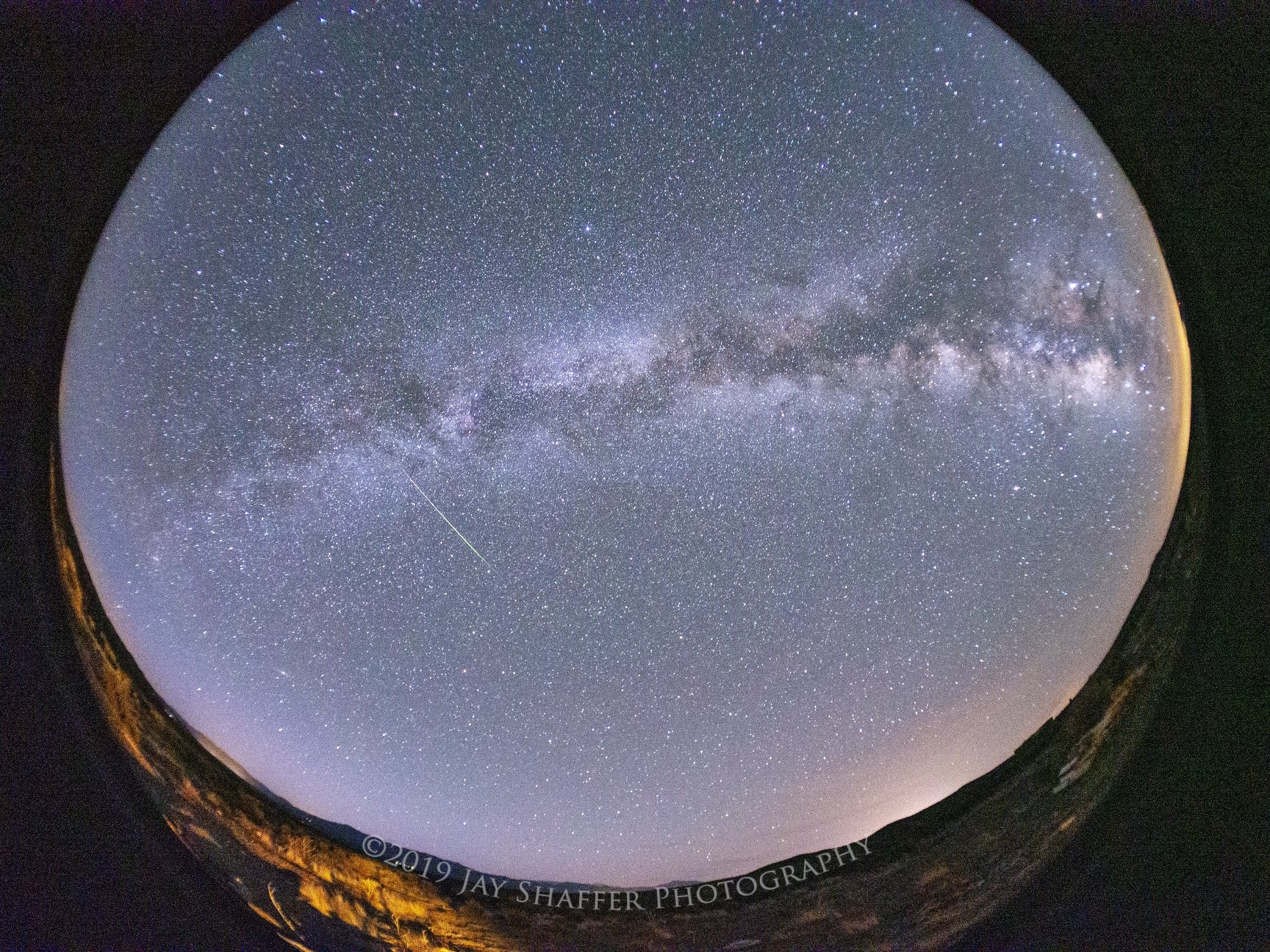Perhaps the most recognizable star pattern in the northern night sky is the Big Dipper. Did you know that the Big Dipper can help you find many other bright stars and constellations? The Big Dipper hangs down by its handle in the northwest these evenings. The apparent middle star of its bent handle is actually two stars, Mizar, with tiny little Alcor right next to it. Legend has it that it was a Native American test of visual acuity to be able to see these two tightly grouped stars.On which side of Mizar should you look for Alcor? As always, on the side pointing toward Vega! Which is the brightest star shining way off in the east, 53° away.
But the Big Dipper’s utility goes far beyond just Mizar and Alcor. This “celestial compass” can point you to so much more!
Let’s start with the “pointer stars” – those two stars at the end of the Big Dipper’s bowl, furthest from the handle. If you draw an imaginary line through these two stars and extend it upwards, it will lead you directly to Polaris, the North Star. Polaris is the end star in the handle of the Little Dipper, or Ursa Minor. And as you know, facing Polaris means you’re facing due North!
Now, let’s go back to the handle of the Big Dipper. If you follow the graceful curve of the handle, extending it outwards, you’ll “arc to Arcturus.” Arcturus is a brilliant orange star, one of the brightest in the night sky, and it’s the brightest star in the constellation Boötes, the Herdsman.
But don’t stop there! If you continue that same arc past Arcturus, you’ll “speed on to Spica.” Spica is a beautiful blue-white star, the brightest in the large constellation Virgo, the Maiden. So remember: “Arc to Arcturus, then speed on to Spica!” It’s a classic star-hopping mnemonic!
What about other directions? Go back to the Big Dipper’s bowl. If you imagine a line from the star connecting the handle to the bowl, through the star at the bottom of the bowl (Phecda and Merak), and extend it downwards, it will point you towards Regulus, the brightest star in the constellation Leo, the Lion. Look for a backward question mark shape, with Regulus as the dot!
And finally, you can even use the Big Dipper to find Cassiopeia, the famous “W” or “M” shaped constellation. If you draw a line from the end of the Big Dipper’s handle (Alkaid) through Polaris, and continue it on the other side, you’ll arrive at Cassiopeia, which lies roughly opposite the Big Dipper from Polaris.
So, the next time you’re under a clear night sky, find the Big Dipper and use it as your guide. With these simple “star hops,” you’ll be navigating the cosmos like a seasoned astronomer and be able to impress your friends, family, and Neighbors!

